Opened in 1849, Chain Bridge was a rudimentary but ingenious structure that marked the first, practically experimental transition between chain bridges and modern structures and was, according to contemporaries, the largest and strongest suspension bridge of its time.
Chain Bridge in the 1860s. The differences to today's bridge can be seen: a light wooden railing on both sides of the chains, the suspension bars are much closer together (Photo: FSZEK Budapest Collection)
The Chain Bridge at the time was indeed a rudimentary structure made partly of wood and other parts of rigid, inflexible cast iron. The bridge was therefore thoroughly inspected in 1873.
The engineer leading the examination, Ferenc Reitter, did not yet consider the condition of the bridge a problem in his report, even though some crossbars had already broken. These crossbars were made of cast iron and held the road itself. The possibility arose to replace the beams of the wooden path of the bridge with iron, but this was discarded.
The bridge was inspected several times in the 1880s, and in 1887 even a link was taken out to determine the quality of the iron material. Although traffic was reduced and freight wagons were diverted from the bridge, no major intervention was required. True, the bridge was constantly maintained, parts of the wood were replaced regularly.
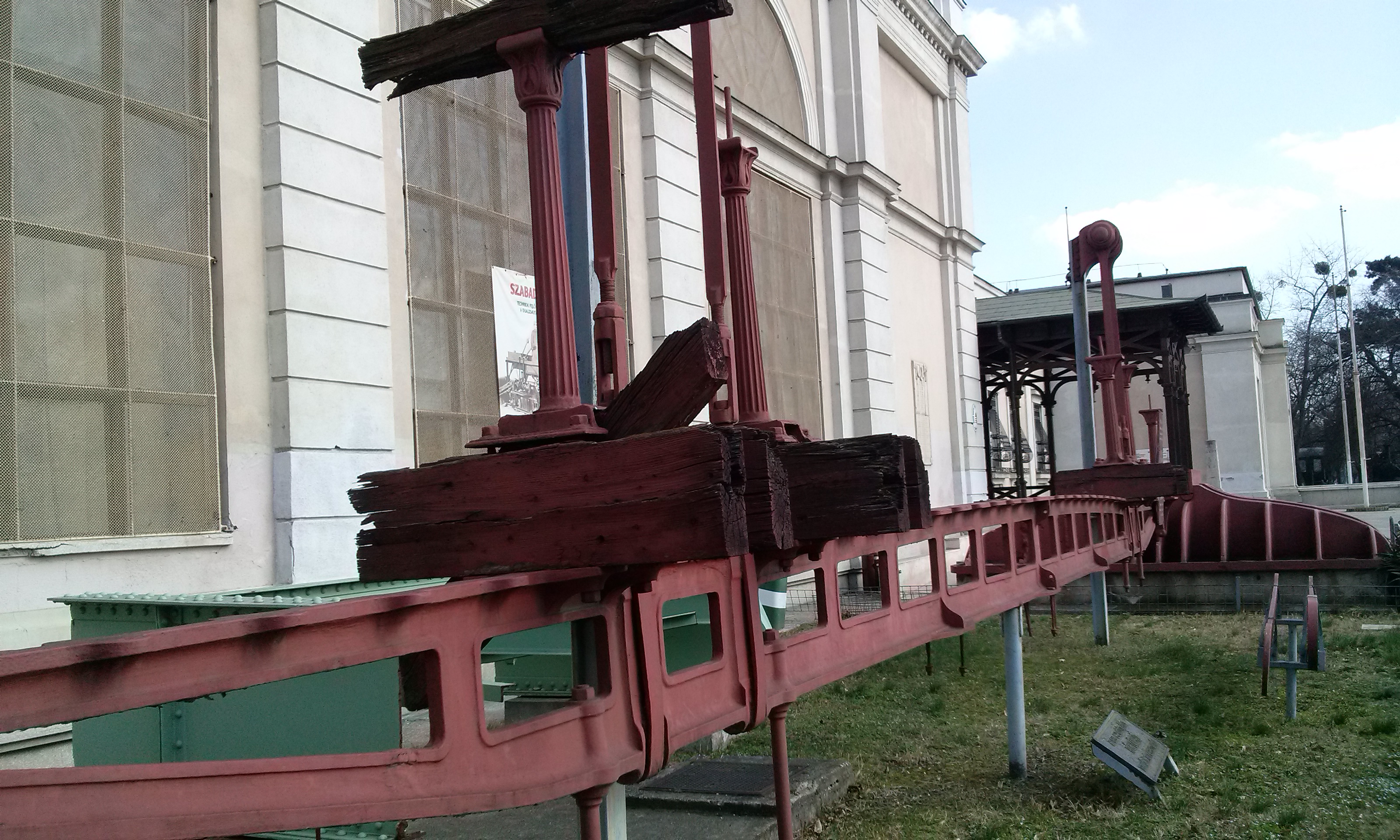
A surviving cast-iron crossbar from the bridge, in front of the old building of the Museum of Transport, which was dismantled in 1914. The wooden parts of the railing are also clearly visible (Photo: MMKM)
A more thorough reconstruction was proposed by experts in 1907 when the 58-year-old bridge was inspected and significant deficiencies were found. Two alternatives were outlined, one according to which the existing structure would have been strengthened, and the other according to which a completely new bridge would have been built by retaining the main parts. Although the first version would have been half a million cheaper, they eventually opted for the second version, despite that its cost was estimated at 5,100,000 crowns. The argument against strengthening the old structure was that the solution would have made the bridge ugly, the reinforcements would have completely changed the image of the bridge.
According to the accepted proposal, a completely new, more modern bridge was built, which followed the old bridge in its visuals, but only its parts made of stone remained unchanged, although the bridgeheads were strengthened with 10,000 cubic metres of concrete.
The plans were prepared by Hungarian experts, with Antal Kherndl and Szilárd Zielinski playing a significant role in developing the theoretical background. The structural plans of the bridge were prepared by József Beke and István Gállik in the Ministry of Trade under the leadership of Ministerial Advisers Sándor Hartig and Albert Szántó.
Of course, several people spoke out against the conversion, and in the press in 1912, several articles appeared that the planned works would completely ruin the bridge. The "Széljegyzet" ('side note') of Pesti Hírlap of 16 July 1912 wrote:
“What this 'rebuilding ’means - we know this well in advance. It means the reckless intrusion of excellent minds and great ingenuity into a masterpiece whose perfect, delicate harmony is impossible to touch without disturbing and ruining the unity of a harmonious impression. So, they want to deprive it of the artistic ornament that has secured its world fame to this day.”
What exactly was rebuilt? Everything that was not made of stone. The rows of chains became larger by a little, and they were assembled from doubled length loops. Of course, the suspension bars were renewed, the crossbars holding the roadway, the saddle heels, and the railings were not made of wood, although their design retained many details of the old wooden structure. The sidewalks of the bridge also underwent significant changes, becoming 40 centimetres wider.
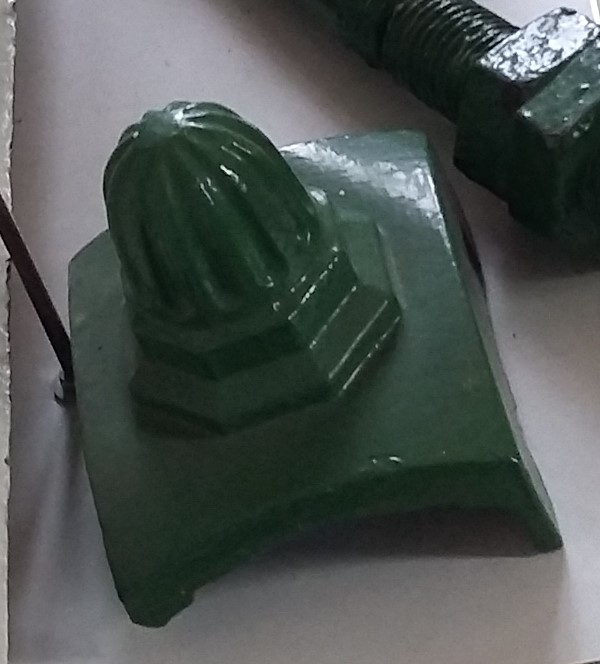
A barrier element removed from the new structure of the bridge at a later renovation. The "lemon squeezer" on top of the railing casting was just an ornament. In the original structure, it was a screw that held the railing together, the shape of which returned as an ornament in the new structure (Photo: MMKM, No.: 10.2000.12.1 a)
The biggest change took place under the chains, between the road and the sidewalk. Here on the old bridge was a light, double wooden railing that separated passers-by from the road, but its real role was not that. This wooden railing was the longitudinal brace of the old bridge. In its day, in the 1830s, 1840s, this was Tierney Clark’s ingenious solution to the problem of suspension bridges swinging and waving. The stiffening bracket distributes the load on the bridge, such as the weight of a wagon, along its length, thereby reducing oscillations.
But this wooden railing was indeed a rudimentary structure. By no means did it meet the growing expectations for the bridge. During the reconstruction, the lightweight railing in the new structure was replaced by a solid steel structure, a stiffening bracket made based on modern calculations.
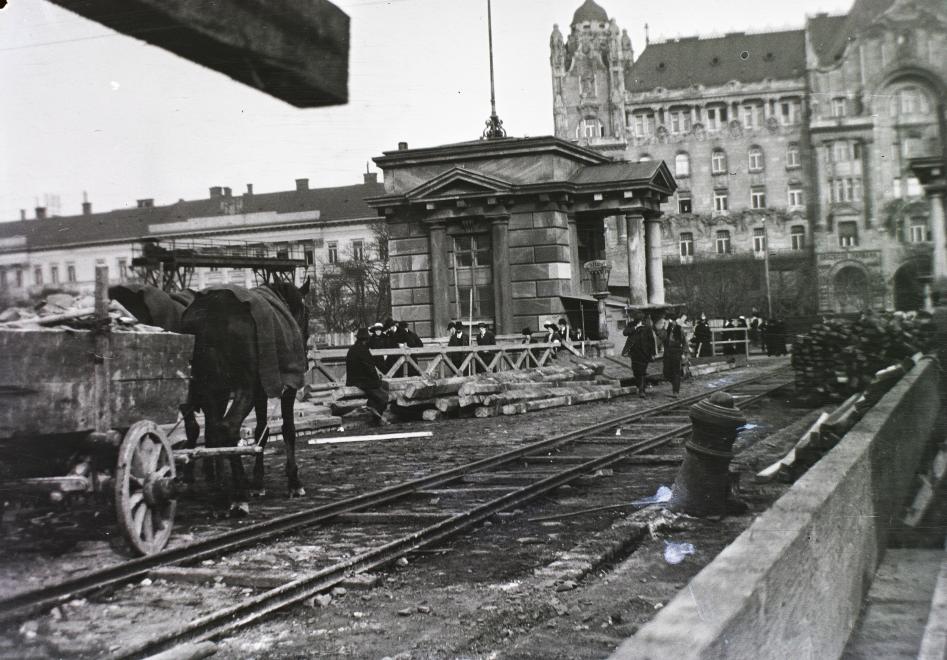
The bridge under reconstruction (Photo: Fortepan/No.: 86039)
The construction itself began in 1913, but at that time, the bridge had not yet been closed. That did not happen until the spring of 1914. The new bridge was opened to traffic on 27 November 1915. But there was another important change: the symbol of Budapest was given a name. The previously unnamed Chain Bridge was subsequently called the Széchenyi Chain Bridge.
The bridge, blown up by German troops in 1945, was rebuilt by 1949 according to plans from 1913, with very minor modifications. Although the 1915, and thus the 1949 Chain Bridge (except for the coats of arms, which were exchanged several times, most recently in 1996, when the originals were restored), resembled the 1849 structure the best possible way, it was not the same. The current bridge was originally built in 1915, so in the sense of the current monument renovation, the metal parts must also reach this oldest condition so that the bridge will be renewed.
The Chain Bridge will hopefully be rebuilt, there will be completely new elements, but this bridge is much more than the totality of the materials in it. It is the symbol of the nation, the most important building in the country.
Cover photo: The bridge under reconstruction in 1914 (Photo: Fortepan/No.: 55666)

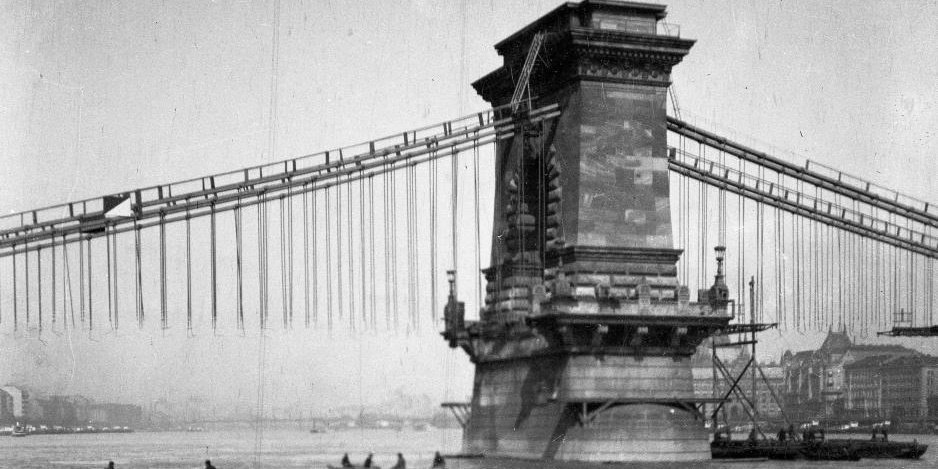




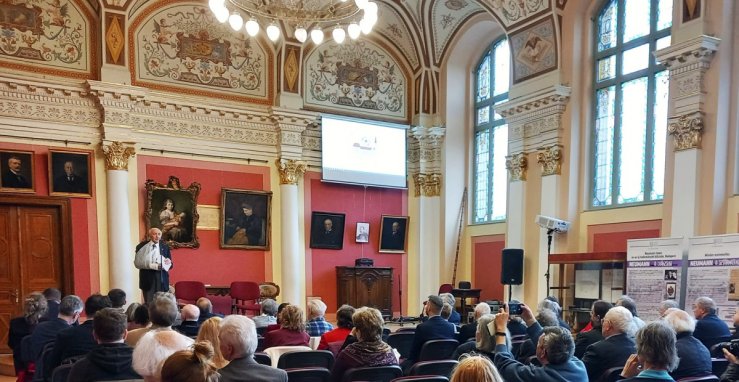






























Hozzászólások
Log in or register to comment!
Login Registration